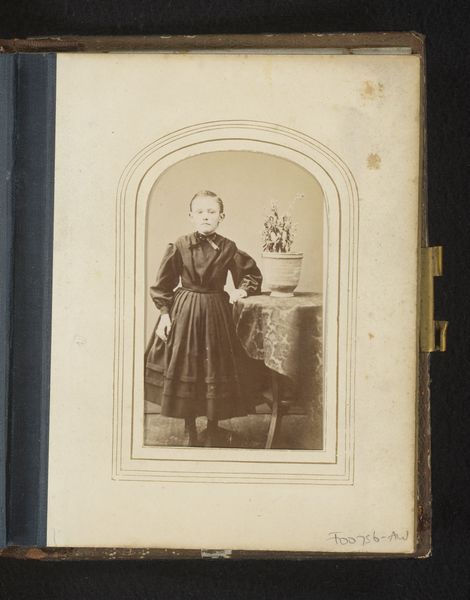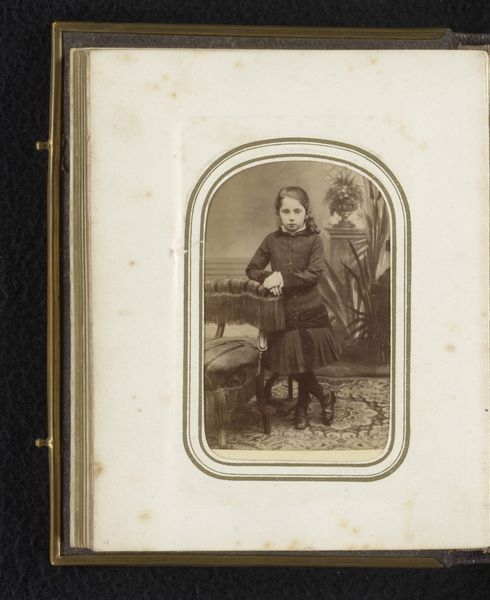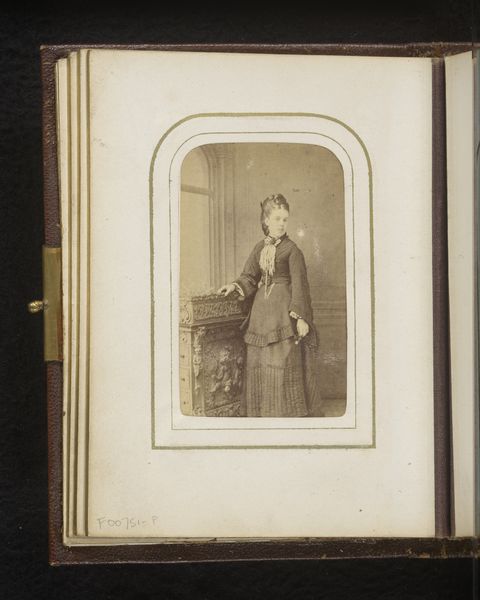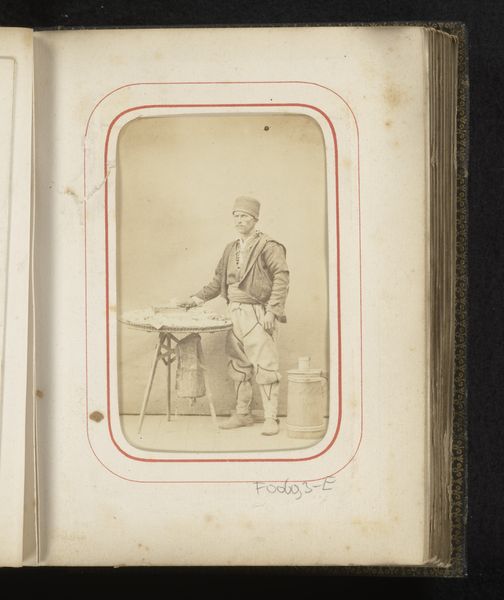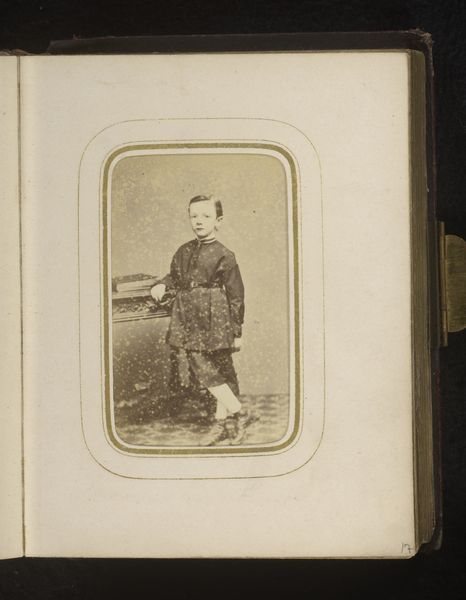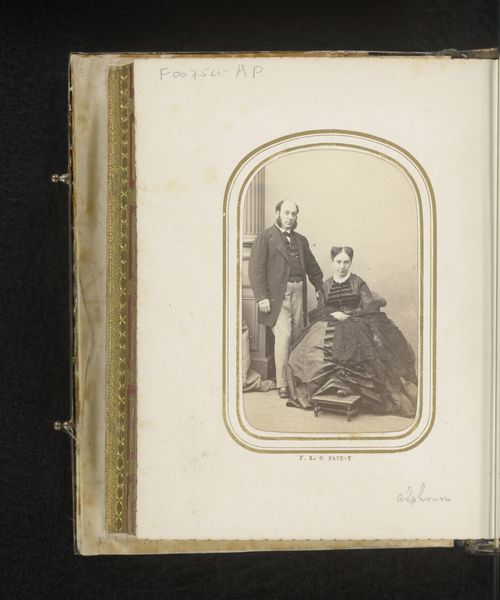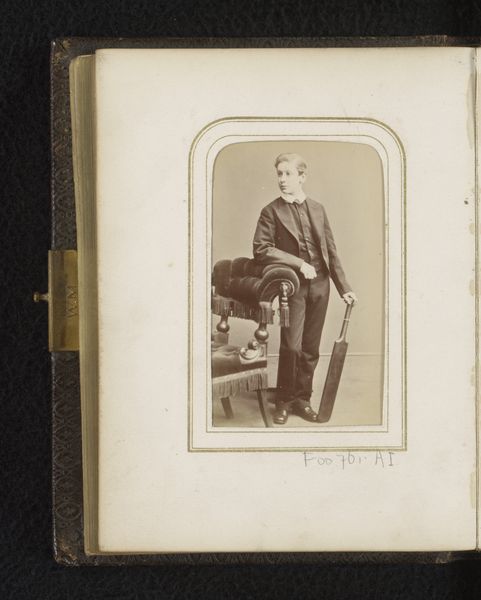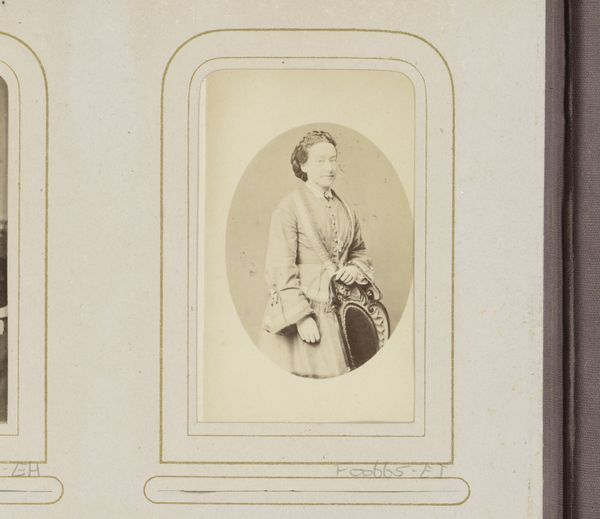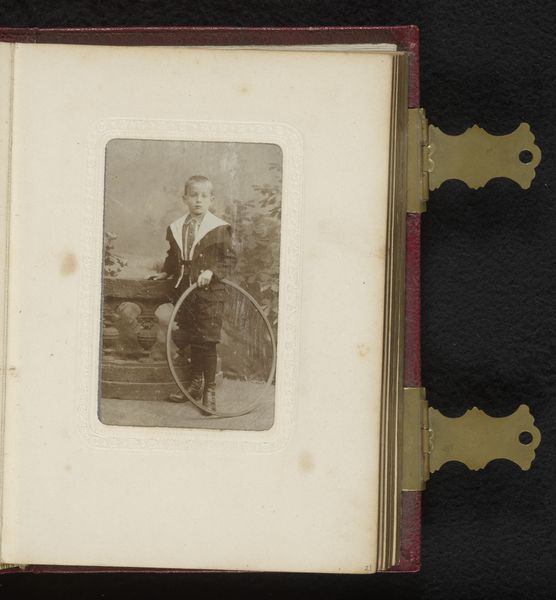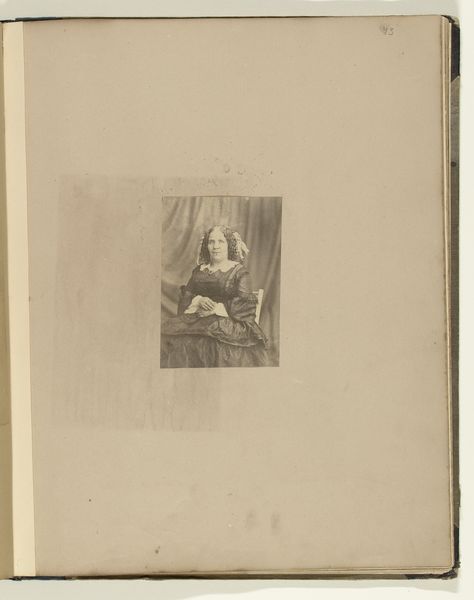
print, photography, gelatin-silver-print
#
portrait
# print
#
photography
#
gelatin-silver-print
#
genre-painting
#
realism
Dimensions: height 86 mm, width 53 mm
Copyright: Rijks Museum: Open Domain
Editor: This is a gelatin-silver print by the Gebroeders Sanders, "Portret van een jongen in geruit pak, staand op een stoel," dating from somewhere between 1855 and 1870. There's something about this photo, the child’s hesitant expression, perhaps, that gives off an air of vulnerability, especially when viewed through a modern lens. How do you interpret this work in its historical and social context? Curator: That's an insightful initial reaction. It’s crucial to remember that photography in this era was far from the snapshot culture we know today. It was a formal, often expensive, and time-consuming process. What does it tell us about Victorian ideals of childhood and portraiture that this child, likely from a privileged background considering the photographic expense, is staged so deliberately? Editor: It makes me wonder about the message they're trying to convey. Is it simply a display of wealth and status? Curator: Possibly, but I encourage you to think deeper. What do the child’s clothes, that distinctive checkered suit, tell us about contemporary notions of fashion and class? Also, consider the chair he's standing on. Why not just have him stand on the floor? Is he being elevated in some way? Editor: That's interesting. Perhaps they wanted to emphasize his youth, showing him almost like a little adult, but not quite. It definitely feels staged. It is a far cry from childhood now. Curator: Precisely! And that staging becomes a key point. Think about how children, especially boys, were presented as miniature versions of their fathers, destined to carry on the family name and legacy. It's also worth questioning the implied gender dynamics; the clothes, the setting – does it conform to or perhaps challenge gender roles? How is the power expressed here and does the image normalize such dynamics or make a social commentary about it? Editor: I see your point. This image isn't just a portrait; it's a carefully constructed representation of social expectations and perhaps aspirations. I definitely have something to think about regarding children in photography. Curator: Indeed. By analyzing such "genre-painting" photos within the context of gender, race, and class, we unlock a far more profound understanding of the society that produced them, and in so doing question power dynamics even now.
Comments
No comments
Be the first to comment and join the conversation on the ultimate creative platform.
